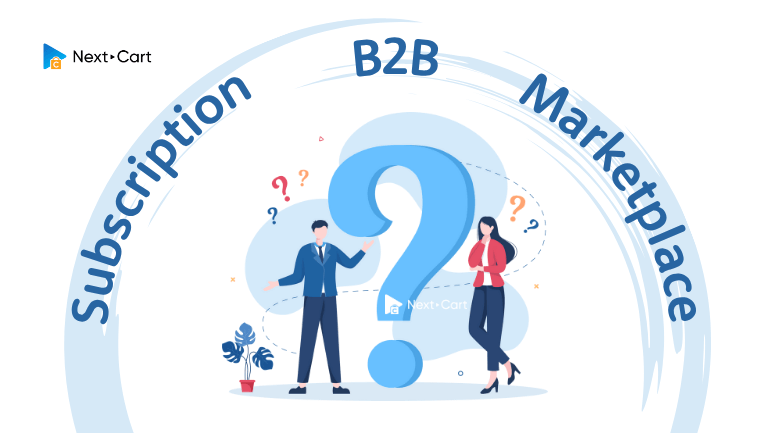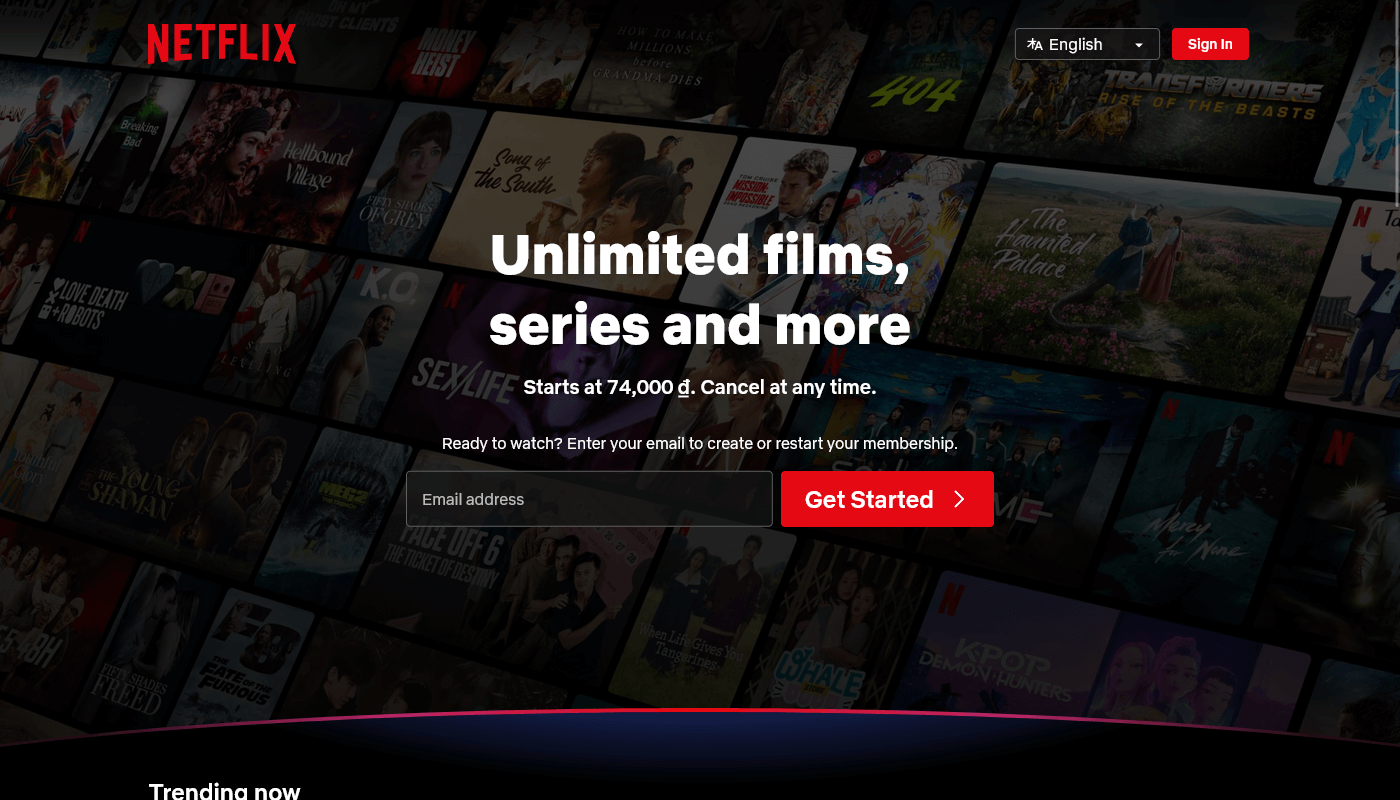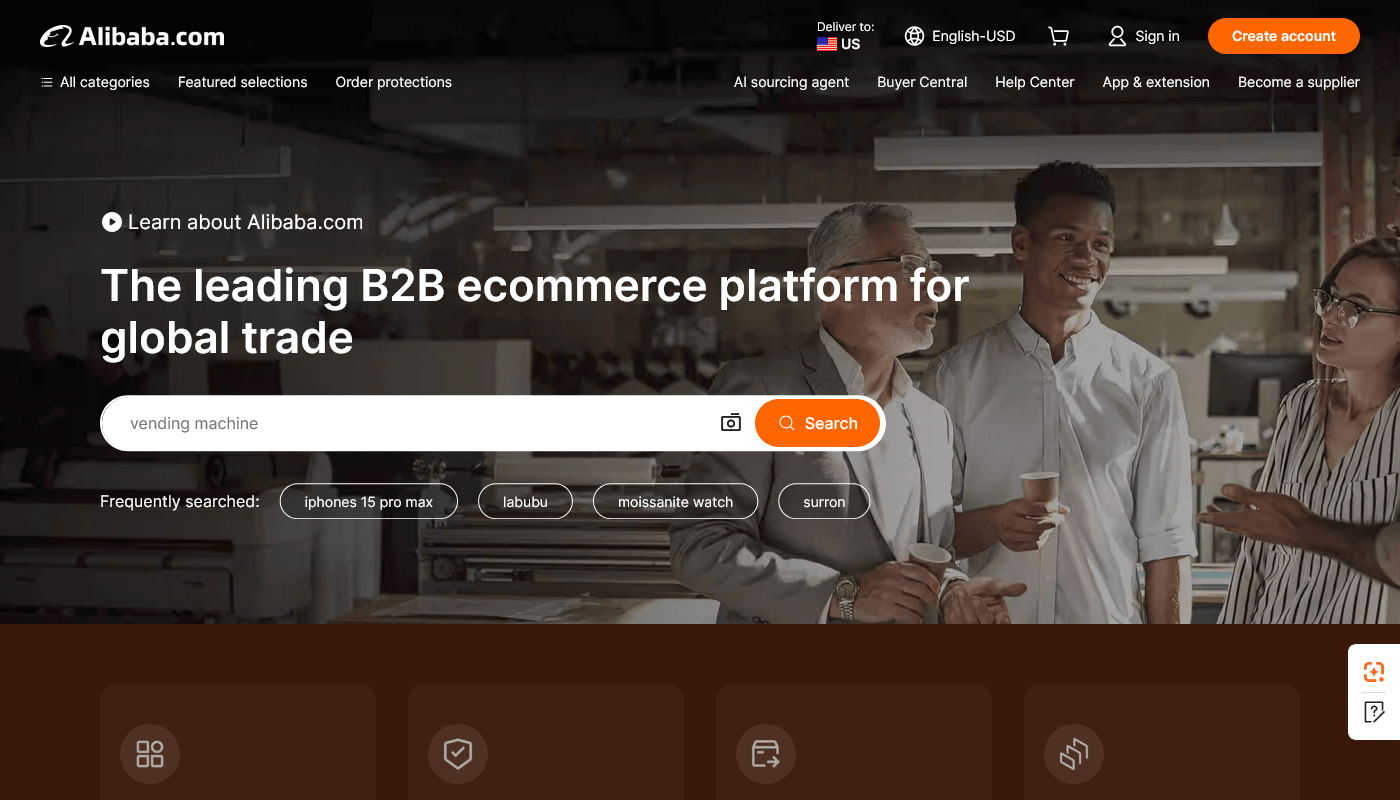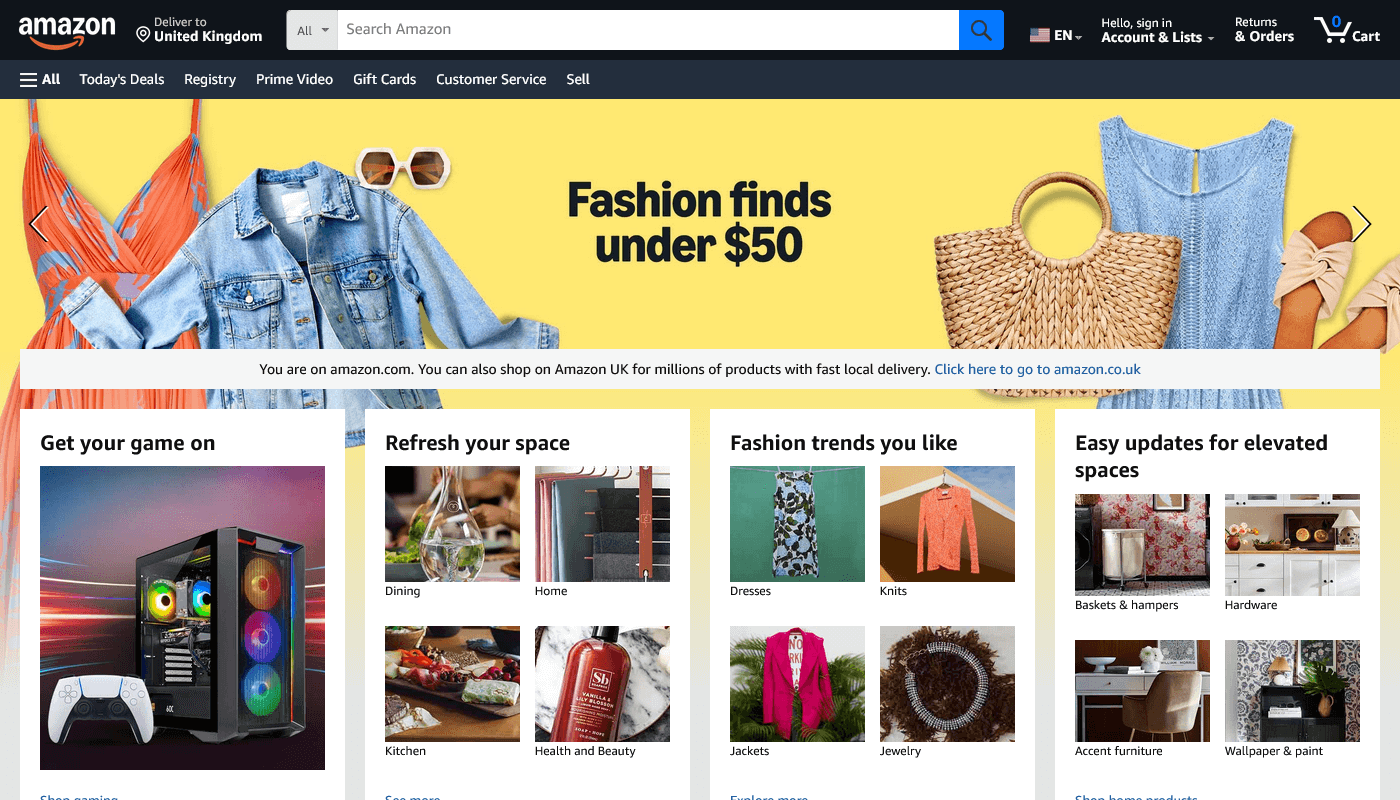
While helping thousands of online stores migrate and scale, Next-Cart has received various questions about choosing the right platform among subscription, B2B, and marketplace. It is easy for businesses to pick a platform for the wrong reasons, due to click ads, big promises, or a familiar brand name.
However, the catch is that what works for one store can hardly be effective in another. Imagine that in unexpected circumstances, in which a subscription-based coffee brand must manage recurring orders without automated billing, a B2B wholesaler must send manual invoices on a retail site without volume-based pricing, or even a startup marketplace cannot support multiple sellers.
A mismatched platform will not only waste your money but also drain your time, frustrate your customers, and hold back your growth. That’s why in this article, we will clarify the differences between the business model options and which one matches your eCommerce platform. Let’s get started!
- Why do you need to understand your business model?
- Choose a subscription business model for building recurring revenue
- Must-have subscription features
- Our recommended platforms for subscriptions
- Common mistakes to avoid when running a subscription business model
- Choose a B2B business model for wholesaling
- Must-have B2B features
- Our recommended platforms for B2B
- Common mistakes to avoid when running a B2B business
- Choose a marketplace business model
- Must-have marketplace features
- Our recommended platforms for marketplaces
- Common mistakes to avoid when building a marketplace
- The next step is handling the migration process
- Final thoughts
Why do you need to understand your business model?
Before going into more details of these models, let’s see why you must choose the right platform if you want to do a long run.
First of all, a business model will shape what your customers expect from you and how you generate revenue.
What happens if your platform doesn’t align with these core realities? You might need to add plugins, create manual workarounds, or pay for customer development.
At Next-Cart, we always ask our new customers these initial essential questions: What do you really sell? Who are you selling it to? How often do they buy? What does your sales process actually look like?
These factors reveal the truth about your operational needs, including:
- You are selling a physical product once, or customers come back every month.
- You target individual consumers (DTC), other businesses (B2B), or you connect multiple sellers and buyers through a marketplace.
- Your buyers expect personalized pricing, bulk orders, or the convenience of set-it-and-forget-it subscriptions.
Let’s take an example of a small craft coffee roaster with a subscription club. They might think they need a basic online store. However, they will soon outgrow a simple checkout setup due to the club, which requires automated recurring payments and customer self-service portals.
Another example is a B2B wholesaler selling industrial supplies and choosing Wix or Squarespace, basic DTC platforms. These platforms are not suitable for complex needs, like tiered pricing, restricted product catalogs, or purchase orders. As a result, the wholesaler will be buried in manual quotes or endless emails.
Next-Cart has migrated dozens of businesses like these. They outgrow their platforms that do not match their real business models. Then, when you know exactly how your business operates and makes money, you can choose a platform that fits and scales with you in the future.
Choose a subscription business model for building recurring revenue

Netflix: Pioneering the Subscription Model for Streaming Entertainment
Some typical examples of the subscription business model are selling monthly coffee deliveries, curated subscription boxes, or digital memberships. This model brings businesses a steady, predictable income stream and builds long-term customer relationships. At the same time, platforms for this kind of subscription business model have to handle a heavy workload.
Must-have subscription features
A subscription business must include these essentials:
- Recurring billing automation: With any subscription model, customers are automatically billed at the right time, weekly, monthly, or annually. You shouldn’t chase payments or process invoices by hand. The right platform will automate the entire cycle and keep you compliant with local tax rules.
- Flexible plans and pricing tiers: Customers love to easily switch between plans, upgrade to a premium option, or try out add-ons. Flexible pricing will make subscribers spend more over time.
- Customer self-service portals: Today’s subscribers expect control over their shipments so that they can pause, skip, or cancel them easily. A good subscription platform makes this easy without complex support tickets.
- Churn reduction tools: The right platform should include built-in retention tools like renewal reminders, loyalty rewards, or upsells to help increase lifetime value.
Our recommended platforms for subscriptions
Here are a few proven platforms that many subscription brands rely on:
- Shopify + Recharge: Most small and mid-sized DTC subscription brands choose this option as it is user-friendly and scalable. In this combination, Shopify handles your main storefront, while Recharge makes recurring billing, customer portals, and retention tools automated.
- WooCommerce with Subscriptions: Brands working on WordPress will find WooCommerce’s official Subscriptions plugin flexible. It is customizable, but users need some hands-on management and technical know-how.
- BigCommerce with third-party plugins: While not including subscriptions by default, BigCommerce integrates with Rebillia and Ordergroove to handle recurring billing and plan management.
Common mistakes to avoid when running a subscription business model
When launching or migrating a subscription store, many businesses in this model encounter these pitfalls:
- Choosing platforms with weak recurring billing: Using a basic checkout without proper recurring payment support is not sufficient for subscriptions.
- No automation: Manually handling billing and reminders tends to create more failed payments and confusion. That’s how you might lose customers.
- Ignoring compliance: As recurring billing must comply with local payment laws and taxes, your platform must automate this matter to protect you from surprises.
The right subscription foundation will be your revenue engine running in the background, allowing you to focus on growing your brand.
Choose a B2B business model for wholesaling

Alibaba: Connecting Businesses with Global Suppliers and Buyers
Selling B2B is completely different from direct-to-consumer retail, in which buyers expect a streamlined experience for negotiated pricing, bulk orders, purchase orders, and secure access. The chosen platform should reflect that reality and requirements.
Must-have B2B features
For your B2B businesses, your platform must contain these vital features:
- Tiered or negotiated pricing: B2B customers prefer volume discounts and individually negotiated rates. Therefore, your platform needs to allow you to create customer groups with their unique pricing.
- Custom catalogs and restricted logins: Many B2B businesses don’t want their entire product pricing shown, but they need some parts of their catalog hidden behind logins and to certain buyers only.
- Bulk ordering & purchase orders: A good B2B platform should accommodate B2B buyers with quick order forms, repeat ordering, and CSV uploading for large purchases. The buyers can also submit purchase orders (POs) instead of paying upfront by credit card.
- Quote requests: As many B2B deals start with a custom quote, built-in tools should let buyers request a quote, negotiate terms, and convert quotes to orders seamlessly.
- Integration with ERP/CRM: Your store should sync with your ERP or CRM, so your sales team can get updated customer and inventory data.
Our recommended platforms for B2B
Some eCommerce platforms are superior to others in handling B2B needs. Here are three we recommend to wholesale clients:
- Magento (Adobe Commerce): The platform offers advanced features for custom pricing, gated catalogs, and purchase orders. Wholesalers with large catalogs and multiple customer segments will benefit from this platform, especially when they have development resources.
- Shopify Plus: Shopify’s B2B features, cooperating with Wholesale Club or B2B on Shopify, will help you manage customer-specific pricing, net payment terms, and separate wholesale storefronts. It is simpler than Magento and suitable for mid-sized B2B businesses.
- BigCommerce B2B Edition: BigCommerce has strong native B2B capabilities, like customer groups, price lists, quote management, and punchout catalogs. It offers a great balance between functionality and operating complexity.
Common mistakes to avoid when running a B2B business
Running B2B can work on a retail-focused platform, but only when you have just a handful of customers. As soon as you grow, avoid these pitfalls:
- Using tools for DTC only: Almost all retail-focused platforms can’t handle wholesale pricing or gated content.
- Manual workarounds: Like retail platforms, spreadsheets, and manual quote emails may work at first, but they will quickly become unmanageable as you scale.
- Ignoring Security: B2B data, especially pricing and sensitive customer info, needs to be properly secured.
In short, the right B2B platform will make your selling easier. At the same time, it will turn your online store into a trusted partner, boosting repeat business and long-term growth.
Choose a marketplace business model

Amazon: The Global Marketplace Revolutionizing E-commerce
Marketplaces are exciting yet challenging business models in which you do not just run a single online store, but you manage an ecosystem of buyers and sellers. Your platform is considered the backbone to keep the community thriving and secure.
Must-have marketplace features
A marketplace and the system behind it must be strong to launch and scale a multi-vendor site. These features are a must-have for this business model:
- Multi-vendor management: A good marketplace accommodates multiple sellers to upload products, fulfill orders, and manage their inventory independently. It will maintain control over this big picture, not only a single-store setup.
- Independent seller dashboards: A marketplace must provide each vendor with their own backend dashboard where they can manage their store and communicate with buyers. It should be easy to use without constant support.
- Commission rules & payout control: Store revenue could come from fees, commissions, or subscriptions. Therefore, a robust marketplace must make splitting payments, tracking earnings, or processing payouts automated. Users will not have to work manually on spreadsheets or guesswork.
- Vendor vetting and onboarding tools: Successful marketplaces often come with built-in vendor approval workflows, application forms, and onboarding processes to help screen sellers before they go live.
- Dispute and review systems: As things like returns, refunds, and disputes might take place, your platform should help buyers and sellers review fairly. It will build trust by keeping everyone accountable.
Our recommended platforms for marketplaces
To handle the complexity of multiple vendors, consider some strong marketplace options:
- Magento with marketplace extensions: Magento is among the most serious and large-scale marketplaces. It comes with a robust multi-vendor extension, like Webkul’s Marketplace, to give you the most flexibility. Moreover, you don’t need developer support to customize vendor workflows, commission models, or payout structures.
- Sharetribe or Arcadier: These are ideal for service and rental marketplaces or a niche product community. You can build a standalone marketplace without heavy coding, as they are plug-and-play options.
- Shopify + multi-vendor apps: Though Shopify is not specially built for a large marketplace, it can help you start with small, simple multi-vendor projects thanks to its apps like Multi Vendor Marketplace by Webkul.
Common mistakes to avoid when building a marketplace
To launch a marketplace that is really meant for independent stores relying on, make sure to avoid these traps:
- Using single-store setups for multi-vendor needs: If you try to “hack” a basic online store into a marketplace, don’t do that because it will not scale.
- Neglecting the seller experience: If you cannot provide convenience for managing products and payments, sellers will leave for a better solution.
- Ignoring trust features: In a multi-vendor community, reviews, escrow, and fair dispute resolution are especially critical. Those are trust features to build buyer confidence and protect your reputation.
A marketplace is thriving when it creates a combination of smooth operations, satisfied vendors, and loyal buyers. That is the right platform to look for!
The next step is handling the migration process
When you have chosen the right platform, the next thing to do is to move from the current platform to the new one. It might not be as simple as copy-paste, yet you have more things to consider than just exporting products and importing customers, or just dragging and dropping CSV files.
What might you encounter when you don’t have a trustworthy migration process? It could be losing and duplicating data, breaking your SEO rankings. Even worse, you will not obtain the essential features your business actually needs.
That’s why Next-Cart comes as an ultimate solution for migrating among eCommerce platforms. We first take time to understand your business model and long-term goals to identify your choice or recommend a new suitable platform.
During our migration process, while we handle the heavy lifting, we still ensure your store operates smoothly. Finally, we test everything before you go live.
As a result, we provide a strategic migration, saving you and ensuring your operations run smoothly.
Final thoughts
Many businesses tend to stick with the platform they know, even though it slows down day-to-day operations. In this situation, moving to another better software will save you time and help you grow with peace of mind. We hope that this article has helped you decide on which business model you are among subscriptions, B2B, or marketplace.
Next-Cart takes time to understand your needs and goals and helps you go through the migration to the right platform smoothly. Contact us if you are ready to switch and work with a partner who knows how to get it right!